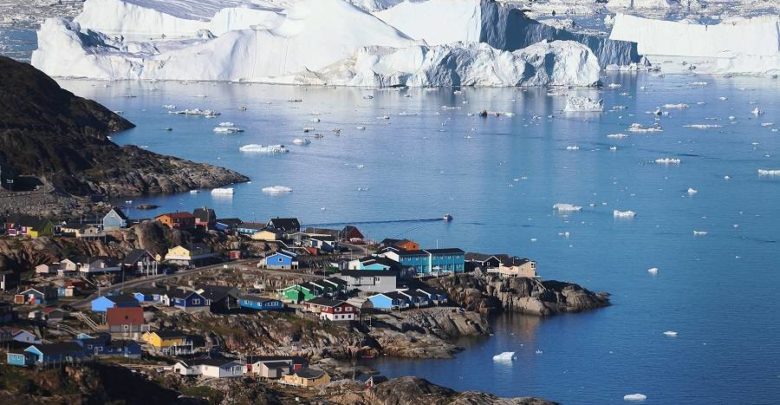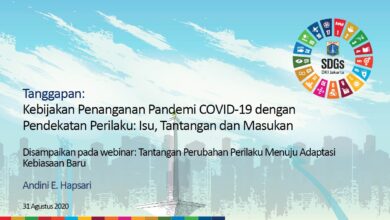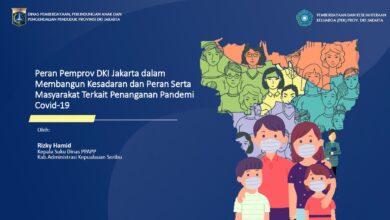
As the planet warms, diverse ecosystems—from mountain glaciers to the icy Arctic to the oceans—are already seeing dangerous effects from climate change. Future warming will threaten food supplies, force the migration of countless species and dramatically change the icy regions of the world. The changes are coming. How much is up to us, scientists warn in a new report released Wednesday by the United Nations.
The changes are happening faster than many scientists expected to see, and they’re often intricately connected, with cascading effects that can ripple through ecosystems.
As global temperatures rise, time is running out. The cryosphere—areas of the planet that are frozen—is shrinking as glaciers and sea ice melt, snowpack declines and permafrost thaws. At the same time, oceans have absorbed 90 percent of the excess heat and about a quarter of the carbon dioxide from human activities, leading to greater acidification that harms shellfish and corals and lowers oxygen levels in the water.
“The world’s oceans and cryosphere have been taking the heat for climate change for decades,” said Ko Barrett, vice chair of the United Nations’ Intergovernmental Panel on Climate Change (IPCC), which produced the report on climate change’s impact on the oceans and cryosphere. “The consequences for nature and humanity are sweeping and severe.”
Just how severe the impacts will become—whether sea level rise stops at 1 to 2 feet by 2100 or continues to rise as high as 3.5 feet; whether the planet sees 20 times more marine heat waves or 50 times more—depends on how, and how quickly, humanity responds to the crisis, the report found.
The report brought together 104 scientists from 36 countries with a variety of expertise. As they reviewed the existing research, the diverse group found interconnections and a magnitude of change that hadn’t been as clear before.
“What’s at stake is the health of ecosystems, wildlife and, importantly, the world we leave our children,” Barrett said.

More than a billion people live in areas that the report focuses on, but climate change impacts to the oceans and cryosphere will have much wider reach. The loss of Arctic sea ice, for example, has the ability to impact weather at the mid-latitudes, and projected losses to glaciers and fisheries would affect food and water security.
“It’s bad, and it’s going to get much, much worse—that’s the bottom line. But it’s not hopeless,” said Jane Lubchenco, a former head of the National Oceanic and Atmospheric Administration (NOAA) and an environmental scientist at Oregon State, who served as a reviewer for the IPCC report. “If we move, then it’s not hopeless.”
Two Pathways, a Strong Argument for Action
Wednesday’s report is the third special report that the IPCC has issued over the past 12 months, following reports on the impact of 1.5 degrees Celsius of global warming and on climate change and land, as well as a report by the UN on the impacts of climate change on biodiversity. All described a risk of climate chaos and urged a rapid transformation of the global economy to limit the damage.
For this report, the IPCC modeled what would happen in the oceans and cryosphere if countries take swift action to keep global warming to 1.5°C (2.7°F)—the goal of the Paris climate agreement. They also looked at a worst-case emissions scenario of unfettered fossil fuel burning.
Though stark impacts face the planet in either case, the difference between the two outcomes presents a strong argument in favor of climate action.
“If we reduce emissions sharply, consequences for people and their livelihoods will still be challenging, but potentially more manageable for those who are most vulnerable,” said Hoesung Lee, a South Korean expert in the economics of climate change and chair of the IPCC. “We increase our ability to build resilience and there will be more benefits for sustainable development.”
Marine Heat Waves to Worsening Storms
As political pressure for action on climate change ratchets up around the world, the report makes it clear that pressure is rising in the natural world, as well.
Since 1993, the report found, the rate of ocean warming has more than doubled. Marine heat waves have doubled in frequency since 1982, becoming longer-lasting, more intense and more extensive. And since the 1980s, the oceans have taken up between 20 and 30 percent of all human-caused CO2 emissions, worsening acidification.
These changes in the oceans are playing out in ecosystems across the globe, where large-scale coral bleaching events are happening with increasing frequency, species are shifting toward the poles in response to ocean warming, and ice-reliant marine mammals and sea birds are having a harder time finding their prey, the report says.
Tropical cyclone winds, rainfall and extreme waves are all increasing. When combined with relative sea level rise, they can exacerbate coastal hazards.
In the icy parts of the world, warming is playing out dramatically.
Ice loss from Antarctica’s ice sheet tripled from 2007 to 2016, relative to 1997-2006. During that same period, ice mass loss doubled in Greenland, largely from surface melting, the report says.
The losses from the ice sheets and mountain glaciers have contributed to sea level rise. Globally sea levels rose by roughly 6 inches in the 20th century, and the oceans are now rising more than twice as fast, according to the report.
Meanwhile, Arctic sea ice is dwindling. Earlier this week, the National Snow and Ice Data Center announced that Arctic sea ice had hit its low point for the year, tying for the second lowest extent on record.
As temperatures climb, areas of frozen soil known as permafrost are also heating up. From 2007 to 2016, the permafrost temperature across polar and high mountain regions globally increased by 0.29°C (0.5°F), according to the report. That frozen ground contains massive amounts of stored carbon—almost twice as much as is in the atmosphere—and it releases methane, a powerful short-lived climate pollutant, as it thaws.
Even Best-Case Scenario Will See Damage
Even if greenhouse gas emissions were stopped tomorrow, the warming impacts of what has already been emitted will continue. That means that a best-case, low-emissions scenario for the future will still see some significant impacts, especially for coastal communities.
“The oxygenation, the acidification, the warming, the movement of fish, the death of corals—it’s just really a grim picture for the tropics,” said Lisa Speer, director of the international oceans program for the Natural Resources Defense Council and an observer to the IPCC process. “Those are also the countries that are some of the most reliant in the world on coastal and ocean ecosystems.”
Under a high-emissions scenario, the outlook darkens even more.
The maximum catch potential of fisheries is projected to decrease by as much as 24 percent relative to 1986-2005 in a world of unabated fossil fuel burning—three to four times worse than under a low-emissions scenario.
The increasing risk of floods, fires, landslides, avalanches and unreliable ice and snow conditions would mean people living in high-mountain regions and the Arctic would face heightened disaster risk, the report found. And as the permafrost thaws, the shifting ground will damage buildings and infrastructure, as well as increase the risk of certain diseases that had been contained in the previously frozen soil.
Either way, the oceans will continue to warm. “Over the 21st century, the ocean is projected to transition to unprecedented conditions” with increased temperatures, greater upper ocean stratification, further acidification and oxygen decline, the authors wrote.
The big question—one that scientists say is impossible to answer so far—is what will happen with the Antarctic ice sheet. Recent studies have found instability in various parts of the ice sheet, and some of the dynamics aren’t well understood yet. Should the ice sheet collapse—a process that can take centuries—sea level rise would be far more dramatic than the report suggests.
“The indications are there that this instability might be on its way, and then it’s very significant if this happens,” said Regine Hock, a climate scientist from the University of Alaska Fairbanks who was one of the report’s lead authors. “If this materialized, then there is a chance of multi-meter sea level rise within the next two or three centuries.”
What Can Be Done?
The authors of the report hope their findings can be used to spur strong action by governments.
“We will only be able to keep global warming to well below 2°C above pre-industrial levels if we effect unprecedented transitions in all aspects of society, including energy, land and ecosystems, urban and infrastructure as well as industry,” said Debra Roberts, co-chair of IPCC Working Group II. “The ambitious climate policies and emissions reductions required to deliver the Paris Agreement will also protect the ocean and cryosphere—and ultimately sustain all life on Earth.”
Lubchenco, the former NOAA administrator, is among those working on solutions.
In a policy forum paper published in the journal Science on Wednesday, Lubchenco and two other scientists write about how better use of the oceans could help mitigate climate change.
They describe five actions that could be undertaken to mitigate climate change: scaling up renewable energy; decarbonizing shipping and transport; protecting and restoring coastal and marine ecosystems; changes to fisheries, aquaculture and diets; and using the seabed for carbon storage.
“This could contribute as much as 21 percent of the emission reduction required in 2050 to limit warming to 1.5°C and 25 percent for a 2°C target,” the authors wrote.
In December, climate negotiators will meet in Chile for the annual Conference of Parties (COP) to the UN Framework Convention on Climate Change. This year’s meeting is being called the “Blue COP”—the oceans will play a central role in the discussions, Lubchenco said.
“I think the reality is that people just haven’t thought seriously about the portfolio of opportunities from the ocean,” she said.
Artikel ini telah tayang di insideclimatenews.org dengan judul “From Antarctica to the Oceans, Climate Change Damage Is About to Get a Lot Worse, IPCC Warns”, https://insideclimatenews.org/news/25092019/ipcc-cryosphere-ocean-report-climate-change-sea-level-rise-greenland-antarctica
Penulis : SABRINA SHANKMAN
Foto Cover : Rising global temperatures have altered people’s way of life in Greenland and the Arctic. A new IPCC report shows even a best case future scenario, with global greenhouse gas emissions falling fast, won’t prevent at least some additional damage. Credit: Joe Raedle/Getty Images.







